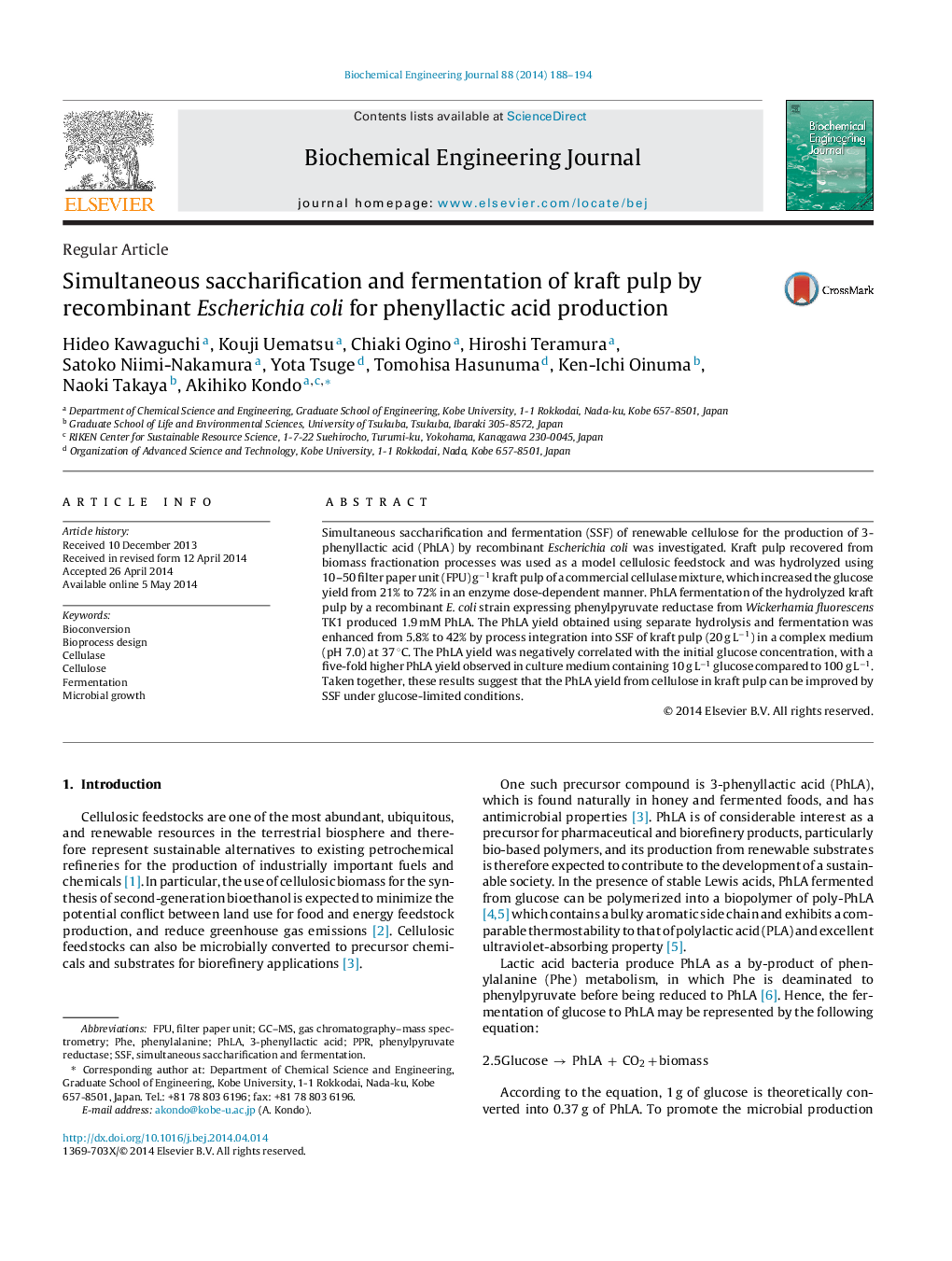| Article ID | Journal | Published Year | Pages | File Type |
|---|---|---|---|---|
| 3168 | Biochemical Engineering Journal | 2014 | 7 Pages |
•Simultaneous saccharification and fermentation yielded phenyllactate from kraft pulp.•SSF yielded more phenyllactate than separate hydrolysis and fermentation.•Glucose limitation improved phenyllactate yield from cellulose by SSF.
Simultaneous saccharification and fermentation (SSF) of renewable cellulose for the production of 3-phenyllactic acid (PhLA) by recombinant Escherichia coli was investigated. Kraft pulp recovered from biomass fractionation processes was used as a model cellulosic feedstock and was hydrolyzed using 10–50 filter paper unit (FPU) g−1 kraft pulp of a commercial cellulase mixture, which increased the glucose yield from 21% to 72% in an enzyme dose-dependent manner. PhLA fermentation of the hydrolyzed kraft pulp by a recombinant E. coli strain expressing phenylpyruvate reductase from Wickerhamia fluorescens TK1 produced 1.9 mM PhLA. The PhLA yield obtained using separate hydrolysis and fermentation was enhanced from 5.8% to 42% by process integration into SSF of kraft pulp (20 g L−1) in a complex medium (pH 7.0) at 37 °C. The PhLA yield was negatively correlated with the initial glucose concentration, with a five-fold higher PhLA yield observed in culture medium containing 10 g L−1 glucose compared to 100 g L−1. Taken together, these results suggest that the PhLA yield from cellulose in kraft pulp can be improved by SSF under glucose-limited conditions.
